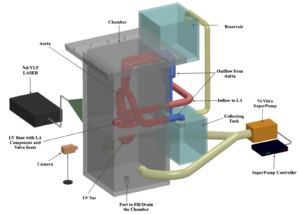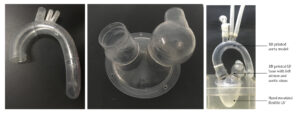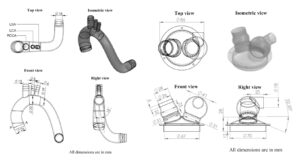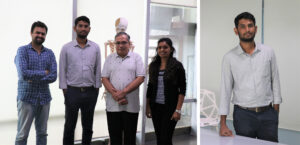Imaginarium helped Satheesh Kumar, a researcher in cardiovascular flow dynamics from IIT Bombay, to prove his hypothesis for his doctorate thesis.
Satheesh Kumar, a researcher from IIT Bombay in cardiovascular flow dynamics was researching fluid dynamics in a biological flow centre for his doctorate. An aeronautics engineer, Satheesh was initially researching hypersonic fluid activity but his fascination with fluid dynamics led him to switch to cardiovascular flow dynamics.
The Thesis
The thesis was to study and understand the fluid dynamics in a biological flow centre (the flow of blood through the human left heart) for which he needed to develop a system that would physically simulate the flow through the left heart.
Proving the Hypothesis With An Accurate Model
The prosthetic vitro human heart centre consisted of the left atrium, the left ventricle, and aorta. The left ventricle base, aorta, and atrium are meant to be rigid components, whereas the left ventricle is supposed to squeeze and therefore needs to be made of a flexible material. The entire system was made of 4-5 components. The squeezing part was made of silicon rubber, allowing it to be transparent and flexible, and the other components needed to be rigid and transparent to correctly identify the fluid dynamic measurables.

3D schematic of the initial left heart setup.
At first, the aorta was made of glass but it didn’t perform as expected as there was no engineering precision and it didn’t follow the biological shape. To rectify this, Satheesh got in touch with Imaginarium and asked them to 3D print the aorta based on drawings prepared using MRI scans. The engineers at Imaginarium also developed a combined component for the left ventricle and aorta, while simultaneously developing a reservoir for the atrium which is similar to human left atrium reservoir.

Left: 3D printed aorta, Centre: 3D printed left ventricle base, Right: The model assembled together
Conclusion
Compared to other conventional techniques, 3D printing helped Satheesh complete his project much faster and precisely, allowing him to validate his hypothesis by capturing the exact fluid dynamics that occurs through the human left heart system.

Left: Geometry of aortic arch with branches of aorta designed based on MR
Images, Right: Geometry of left ventricle base with left atrium component
and aortic sinus

Left: Satheesh with our team that helped design and build the model,
Right: Dr Satheesh Kumar
If you or your organisation are looking to make models to prove your research, get in touch with our specialists at Imaginarium by email on rapid@imaginarium.io or log on to the Rapid Online Factory to start your project today!
